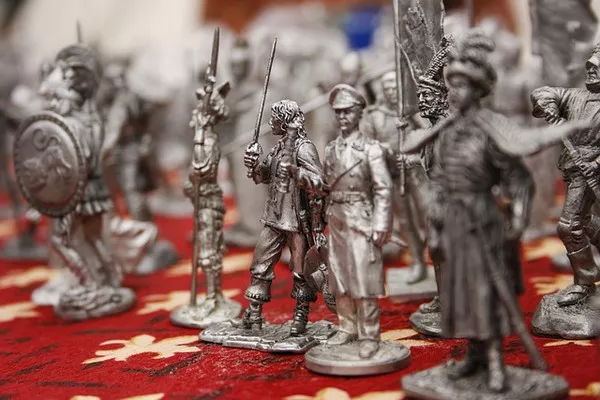In the world of numismatics, the value of coins often transcends their face value. This is particularly true for silver dollars, which have a storied history and can be sought after for their rarity, condition, and historical significance. The 1976 silver dollar, specifically the Eisenhower dollar, is no exception. Born out of a commemorative spirit for the bicentennial of the United States, these coins hold both monetary and sentimental value for collectors and investors alike.
Historical Context and Production
The Eisenhower dollar, named after President Dwight D. Eisenhower, was first minted in 1971. The 1976 edition, however, holds a unique place as it was issued to commemorate the bicentennial anniversary of the United States. This special edition featured dual-dating: 1776-1976. The design on the reverse side of the coin was updated to reflect the occasion, featuring a depiction of the Liberty Bell superimposed against the moon. This design by Dennis R. Williams symbolizes both American independence and technological achievement, a fitting tribute to the nation’s 200th birthday.
Composition and Characteristics
The 1976 Eisenhower silver dollars were minted in both clad and silver versions. The standard clad version, which is more commonly found in circulation, consists of outer layers of copper-nickel bonded to a copper core. The silver version, on the other hand, is composed of 40% silver and 60% copper, with a total weight of 24.59 grams. The silver content adds to its appeal among collectors and investors who value precious metals.
Collecting and Investment Potential
Determining the value of a 1976 silver dollar involves assessing several key factors:
Condition (Grade): Like all coins, the condition of the Eisenhower dollar significantly affects its value. Coins in uncirculated or mint condition are generally more valuable than those that have been circulated and show signs of wear.
Mintage Numbers: The number of coins minted can influence their rarity and, consequently, their value. While millions of Eisenhower dollars were minted in 1976, the silver version was produced in smaller quantities compared to its clad counterpart.
Precious Metal Content: For silver coins, the spot price of silver in the commodities market directly impacts their value. Investors often track these prices closely, as they affect the intrinsic worth of the coins.
Historical and Numismatic Interest: Coins that hold historical significance or have unique characteristics often attract collectors willing to pay a premium. The bicentennial Eisenhower dollars fall into this category due to their commemorative nature.
Valuation Methods
Numismatic Value
Numismatic value refers to the worth of a coin to collectors, beyond its metal content. Factors influencing numismatic value include rarity, demand, and condition. To assess the numismatic value of a 1976 silver dollar, collectors often refer to pricing guides, auction results, and consultations with experts in the field. Organizations such as the Professional Coin Grading Service (PCGS) and Numismatic Guaranty Corporation (NGC) provide grading services that authenticate coins and assign them a grade based on their condition.
Intrinsic Metal Value
The intrinsic value of a silver dollar is derived from its metal content. The silver Eisenhower dollar, with its 40% silver composition, holds a certain amount of silver that fluctuates in value based on market conditions. Investors interested in precious metals may calculate the coin’s intrinsic value based on the current spot price of silver per ounce.
Market Trends and Prices
The market for Eisenhower dollars, particularly the silver versions, has seen fluctuations over the years. Factors such as economic conditions, collector trends, and the price of silver all influence market prices. Generally, silver dollars in good condition tend to hold or increase in value over time, reflecting both their numismatic and intrinsic worth.
Steps to Determine Value
For those interested in assessing the value of a 1976 silver dollar, consider the following steps:
Identify the Coin: Verify the year and mint mark (if applicable) on the coin. Mint marks can indicate where the coin was minted and sometimes affect its rarity.
Evaluate Condition: Examine the coin for wear, scratches, or discoloration. Coins in better condition typically command higher prices.
Consult Resources: Refer to numismatic guides, online databases, or coin dealers who specialize in Eisenhower dollars. These resources provide insights into market trends and current values.
Consider Professional Grading: For valuable coins or those in exceptional condition, consider having them graded by a reputable service. A certified grade can authenticate the coin’s condition and potentially increase its marketability.
SEE ALSO What Happens To Silver When Interest Rates Rise
Conclusion
The 1976 silver dollar, specifically the Eisenhower dollar, holds both historical significance and tangible value for collectors and investors. Whether for its commemorative design, silver content, or numismatic interest, these coins continue to attract attention in the numismatic community. Assessing the value of a 1976 silver dollar involves understanding its condition, historical context, and market trends. By leveraging these insights and resources, collectors and investors can make informed decisions regarding the acquisition, sale, or preservation of these iconic coins. As with any investment, conducting thorough research and consulting with experts can enhance one’s understanding and appreciation of these numismatic treasures.


